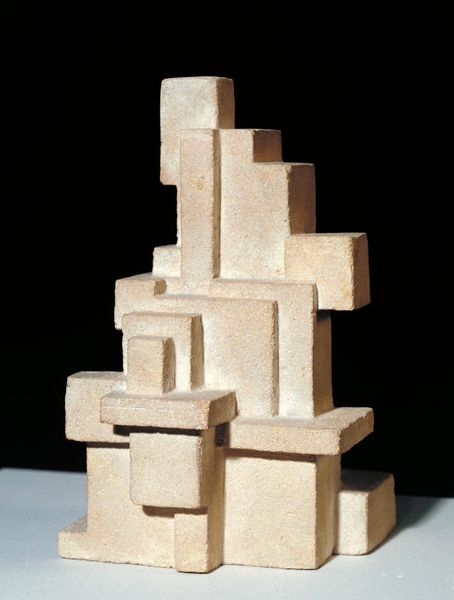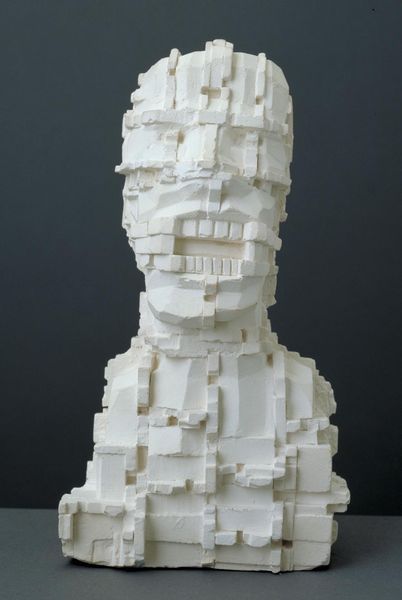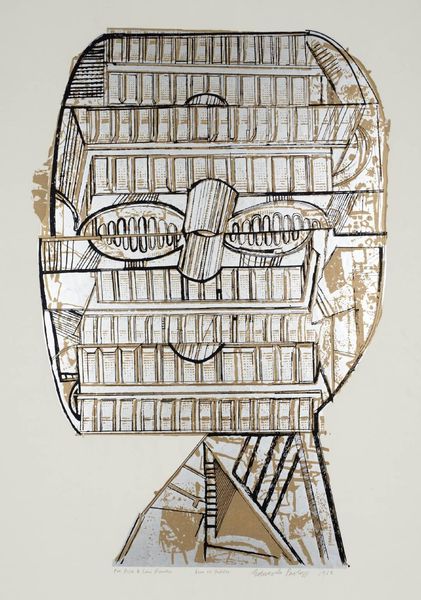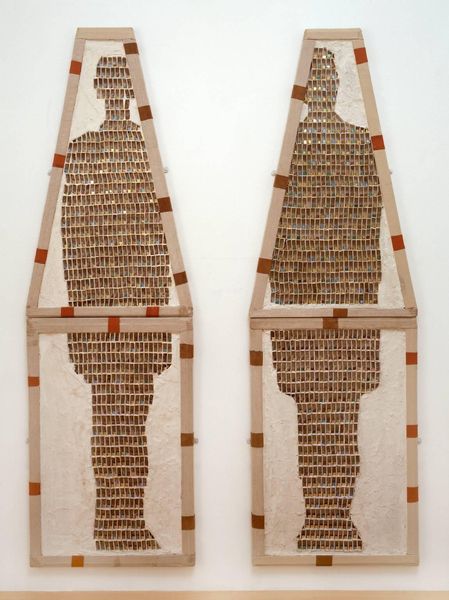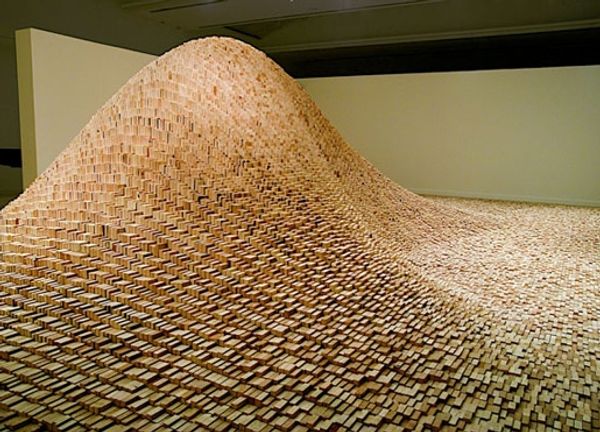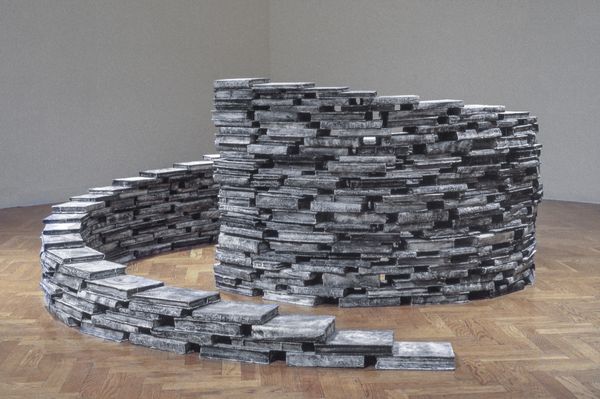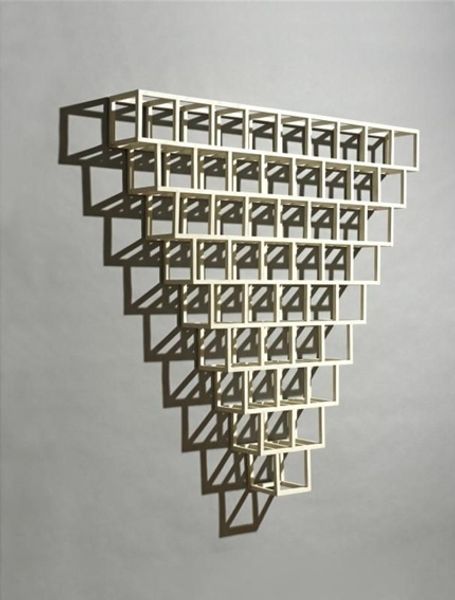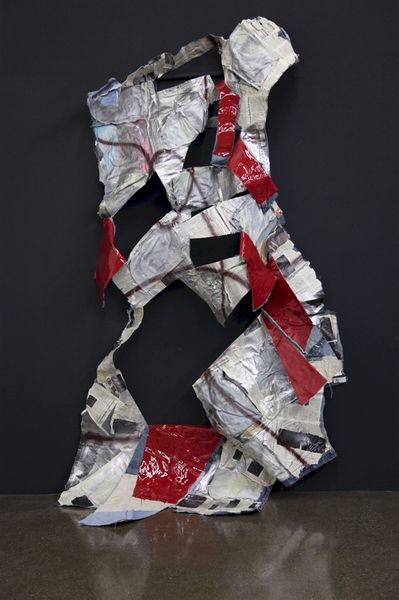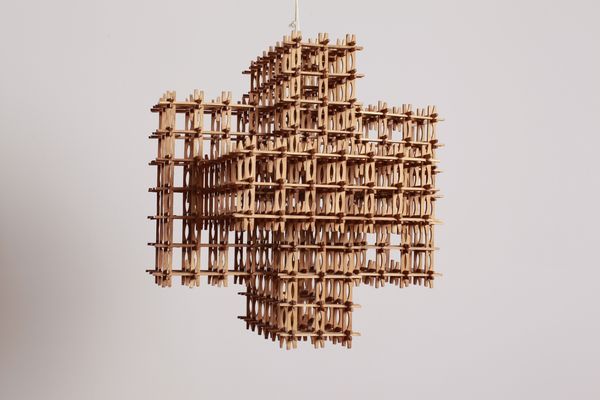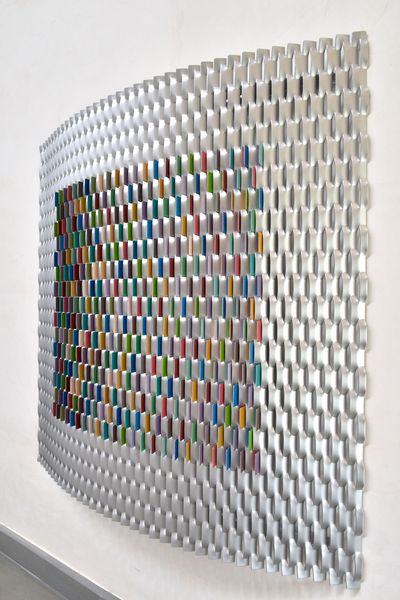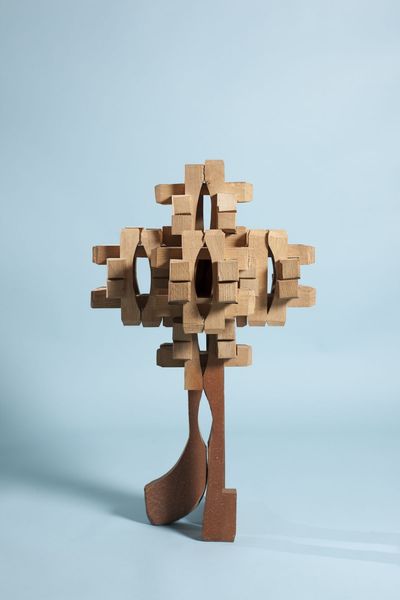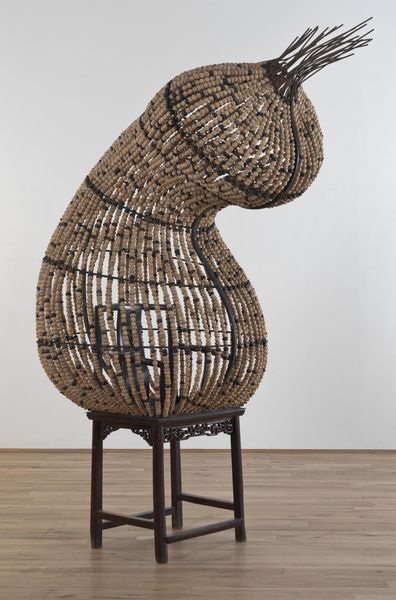
#
natural stone pattern
#
natural shape and form
#
worn
#
detailed texture
#
pattern making
#
sculptural image
#
hand-embroidered
#
repetitive shape and pattern
#
structured
#
layered pattern
Dimensions: 48 x 32 cm
Copyright: La foto es de mi propiedad y autorizo la publicación sobre WIKIART ESPANOL - ENCICLOPEDIA DE ARTES VISUALES - Joseph Pace
Curator: Looking at Joseph Pace's 2017 sculpture, "Algorithm Mind Maps #35", what are your initial thoughts? It seems to be crafted from stacked layers with inset bead-like elements. Editor: My first impression is a sense of vulnerability, strangely enough. Despite the rigid, grid-like structure, the silhouette and delicate embellishments make it feel surprisingly human and fragile. Almost like a digital representation of the body. Curator: I see what you mean. It begs the question: What narratives are at play when technology intersects with ideas of identity and representation? Especially with the work being titled as 'Algorithm Mind Maps', referencing not just technology but our own cognitive structures. Editor: Exactly. There's this constant tension between control and chaos, structure and fragmentation. Consider how institutions have historically classified bodies - the layered pattern could be read as a direct visual critique of such categorizations. Does this structured appearance reflect attempts to systemize something as inherently fluid as the human mind? Curator: That's an insightful read, reflecting a long trajectory of systems like phrenology trying to codify humanity. The title pushes that further. Also, the piece's materiality cannot be divorced from its context: were these repurposed or newly-produced materials, and what implications might that have on social inequality and resource access? How accessible ARE 'mind maps'? Editor: A point well taken. The use of repetition in those materials really resonates on an economic level. Speaking of material, how do you think Pace’s artistic choices reflect shifting representations within contemporary media and culture? Is this commenting on the pervasive nature of algorithms, which influence much of what we see and experience? Curator: That is entirely possible, reflecting contemporary surveillance, and bias inherent in those datasets. The historical lack of intersectional representation, and biased data within algorithms would result in a reproduction of limited identity categories. Editor: Indeed. Looking closer, I wonder, will audiences perceive and receive Pace’s "Algorithm Mind Maps #35" through the looking glass of their lived experience and their awareness of institutional or structural forces? Curator: It's inevitable really, as the audience engagement often completes the life cycle of the artwork in social and political discourse, as does this current engagement. Editor: This makes me view how institutions also impact perceptions about identities. Overall, very thoughtful piece.
Comments
No comments
Be the first to comment and join the conversation on the ultimate creative platform.
